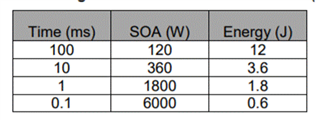Other Parts Discussed in Thread: TIDA-010242
Hi,
in TIDA-010242:
"To determine the MOSFET, the safe operating stress of the MOSFET must be calculated. There is a MILSTD-1275E SOA calculator that can be downloaded to help determine if a MOSFET is capable of handling the surge event."
could you please send me a link to download the SOA calculator? I can not find it anywhere.
I even would like some help with the way calculation have been performed at page 4. why multiplying 15.7 with 28V an not with 50V to calculate the power.
Best regards






